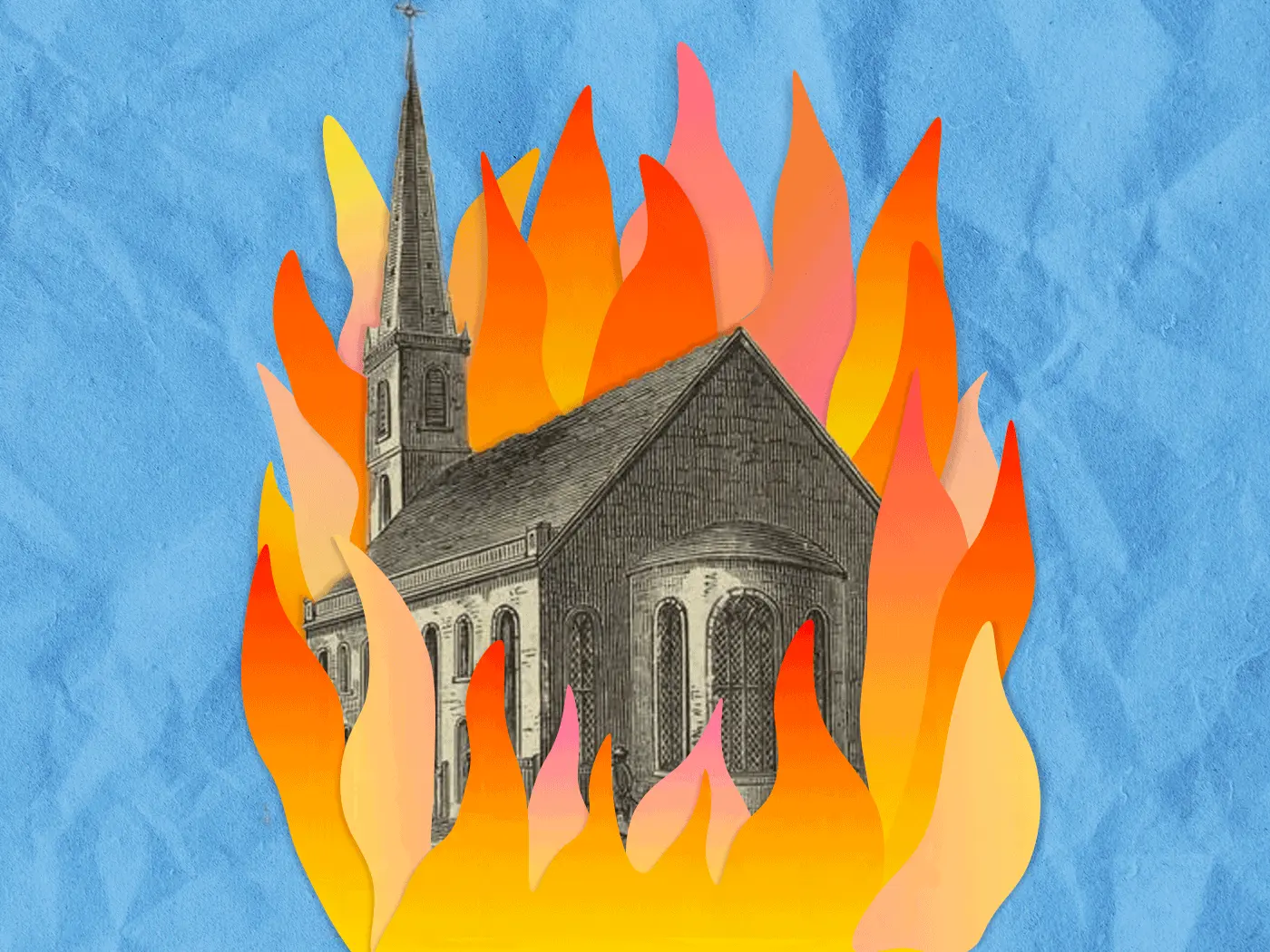American Revolution
This History Buff Found a Scrap of George Washington's Tent at Goodwill
The fragment, which was part of Washington's dining marquee during the Revolutionary War, is now on display at a museum in Philadelphia
Musket Balls Fired in Early Revolutionary War Battle Unearthed in Concord
Colonial militiamen fired the lead balls on April 19, 1775—and likely missed their mark
The Paris Games' Mascot, the Olympic Phryge, Boasts a Little-Known Revolutionary Past
The Phrygian cap, also known as the liberty cap, emerged as a potent symbol in 18th-century America and France
You Could Own Rare Copies of the Nation's Founding Documents, Just in Time for the Fourth of July
Sotheby's is auctioning early printings of the Declaration of Independence, the Constitution and the Bill of Rights, as well as a 1790 Rhode Island broadside
The Real Story Behind Apple TV+'s 'Franklin'
A new limited series starring Michael Douglas as Benjamin Franklin revisits the founding father's years as the American ambassador to France
The Eclipse Chaser Who Led an Expedition Behind Enemy Lines During the Revolutionary War
In 1780, astronomer Samuel Williams journeyed to British-controlled territory to view a total solar eclipse
Rare Eyewitness Sketch of American Revolutionaries Found Hanging in a Collector's Bedroom
The drawing, which the owner recently donated to a museum, depicts the North Carolina Brigade passing through Philadelphia in 1777
From These Modest Wartime Quarters, George Washington Kept the Revolution Alive
The general's war tent, an iconic part of the Museum of the American Revolution in Philadelphia, carries as much symbolism now as it did then
The Met Is Selling This Rare Portrait of George Washington
Artist Gilbert Stuart painted the work after the president sat for him in late 1795
The Many Myths of the Boston Tea Party
Contrary to popular belief, the 1773 protest opposed a tax break, not a tax hike. And it didn't immediately unify the colonies against the British
What Emoji Tell Us About the History of Tea
From ancient China to 20th-century America, the aromatic beverage has undergone a dramatic evolution
Breaking Down the United States' Historical Obsession With Christopher Columbus
Columbus became Columbus in the American Revolution—when the colonials sought out an origin story that didn’t involve the British
Meet Brother Jonathan, the Predecessor to Uncle Sam
Older, but by no means wiser, the political cartoon character symbolized a mischievous young nation
A Time Capsule Opened Live on Stage Was Empty. Later, Treasures Emerged From the Silt
Found at West Point, the 200-year-old box concealed six silver coins and a medal
Could Humans Survive Unprotected Outside of Earth's Atmosphere for Even Ten Seconds?
You’ve got questions. We’ve got experts
Before Lady Liberty, There Was Lady Columbia, America's First National Mascot
The forgotten figure symbolized the hopes—and myths—of the early United States
The Dog Who Served on Both Sides of the American Revolution
A newly discovered letter suggests a Newfoundland named Rebel accompanied both Continental and British officers into battle
Enslaved by George Washington, This Man Escaped to Freedom—and Joined the British Army
Harry Washington fought for his enslaver's enemy during the American Revolution. Later, he migrated to Nova Scotia and Sierra Leone
Did George Washington Order Rebels to Burn New York City in 1776?
A new book points out that the general was happy when the city burned and expressed regret that more of it was not destroyed during the fire
Why Did the American Colonies Keep Their British Names After the Revolution?
You've got questions. We've got experts
Page 1 of 8
:focal(2016x1517:2017x1518)/https://tf-cmsv2-smithsonianmag-media.s3.amazonaws.com/filer_public/81/72/81726c36-88c6-4eca-b2f3-e68903e76119/image_16.jpg)
:focal(578x435:579x436)/https://tf-cmsv2-smithsonianmag-media.s3.amazonaws.com/filer_public/1d/63/1d63c31b-a4d0-4d7b-ac13-8f0a0604dd88/img_2039_1.jpeg)
:focal(700x527:701x528)/https://tf-cmsv2-smithsonianmag-media.s3.amazonaws.com/filer_public/72/d6/72d63cda-a461-4f28-b9b3-867293afeba9/phryg.jpg)
:focal(1500x1200:1501x1201)/https://tf-cmsv2-smithsonianmag-media.s3.amazonaws.com/filer_public/40/bb/40bb8561-edb9-4da2-9f46-414b307889ba/060524_founding_documents_011-v2.jpg)
:focal(700x527:701x528)/https://tf-cmsv2-smithsonianmag-media.s3.amazonaws.com/filer_public/67/09/67093a85-b160-42fc-b0d1-19e3712e2fdf/benf.jpg)
:focal(700x527:701x528)/https://tf-cmsv2-smithsonianmag-media.s3.amazonaws.com/filer_public/67/54/67542db1-d75f-411b-8334-03503fa23d7f/eclipse4.jpg)
:focal(728x547:729x548)/https://tf-cmsv2-smithsonianmag-media.s3.amazonaws.com/filer_public/30/2a/302a8834-75ef-4ec9-b3e3-b9cba1c9a6ac/screen_shot_2024-03-28_at_125032_pm.jpeg)
:focal(450x300:451x301)/https://tf-cmsv2-smithsonianmag-media.s3.amazonaws.com/filer_public/89/6c/896c7d91-b880-4f75-8de7-a30cefa9d36b/image_090420_george_washington_tent_film_085_theater-_1.jpg)
:focal(2750x1990:2751x1991)/https://tf-cmsv2-smithsonianmag-media.s3.amazonaws.com/filer_public/4d/77/4d77904a-868c-4723-b6bc-4c6500e4221f/gw_1.jpg)
![The Bostonians’ “preferred outcome” was for the tea to be “peacefully sent back to London,” says historian Benjamin L. Carp. “It’s only when they find out … the governor is not going to let [that happen] that they say, ‘Well, we have no choice [but] to destroy [the tea].”](https://th-thumbnailer.cdn-si-edu.com/YhNn5XJKmcieZwbEEmvjReSrOT4=/400x300/filters:no_upscale():focal(700x527:701x528)/https://tf-cmsv2-smithsonianmag-media.s3.amazonaws.com/filer_public/43/66/43662967-ea0e-4ff2-8c9a-6f79fb77e472/tea-party.jpg)
:focal(700x527:701x528)/https://tf-cmsv2-smithsonianmag-media.s3.amazonaws.com/filer_public/43/0b/430b0b1e-2ab3-4255-a0ef-26806a1e466e/tea42.jpg)
:focal(1500x1029:1501x1030)/https://tf-cmsv2-smithsonianmag-media.s3.amazonaws.com/filer_public/f5/03/f503cf85-4fa8-4889-8c5b-180d906f1403/gettyimages-77212742.jpg)
:focal(713x455:714x456)/https://tf-cmsv2-smithsonianmag-media.s3.amazonaws.com/filer_public/e3/fc/e3fcbe16-96ff-4988-b00d-31c892f4c8bb/sepoct2023_c23_prologue.jpg)
:focal(1024x692:1025x693)/https://tf-cmsv2-smithsonianmag-media.s3.amazonaws.com/filer_public/07/23/0723f5b4-6003-4dff-b851-6374b4a6d22a/53123876860_459e7311f5_k.jpg)
:focal(560x421:561x422)/https://tf-cmsv2-smithsonianmag-media.s3.amazonaws.com/filer_public/a0/2a/a02a7a43-7bb9-48c8-91e6-7b3bb2ba09dd/ask.jpg)
:focal(1050x750:1051x751)/https://tf-cmsv2-smithsonianmag-media.s3.amazonaws.com/filer_public/cd/4b/cd4bd968-a692-4c2e-a0e7-826ecfa917fc/lady.jpg)
:focal(700x527:701x528)/https://tf-cmsv2-smithsonianmag-media.s3.amazonaws.com/filer_public/ea/6f/ea6f66a7-2344-4e91-bc2c-592f3c0a6366/rebel.jpg)
:focal(700x527:701x528)/https://tf-cmsv2-smithsonianmag-media.s3.amazonaws.com/filer_public/cf/78/cf78d035-a2ea-454a-8038-8ea54cba0bc4/harry.jpg)

:focal(456x334:457x335)/https://tf-cmsv2-smithsonianmag-media.s3.amazonaws.com/filer_public/83/4e/834e74b5-f58c-4580-a464-4b876cf00234/ask.jpg)